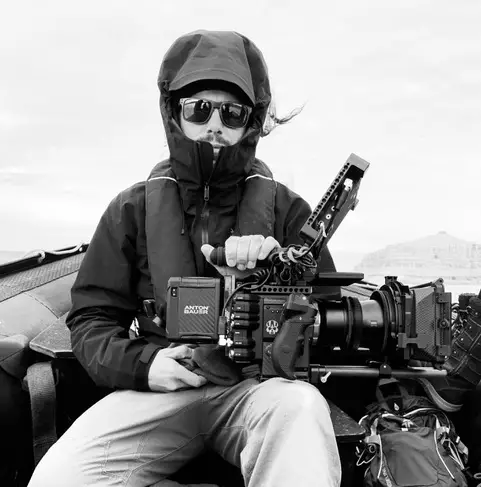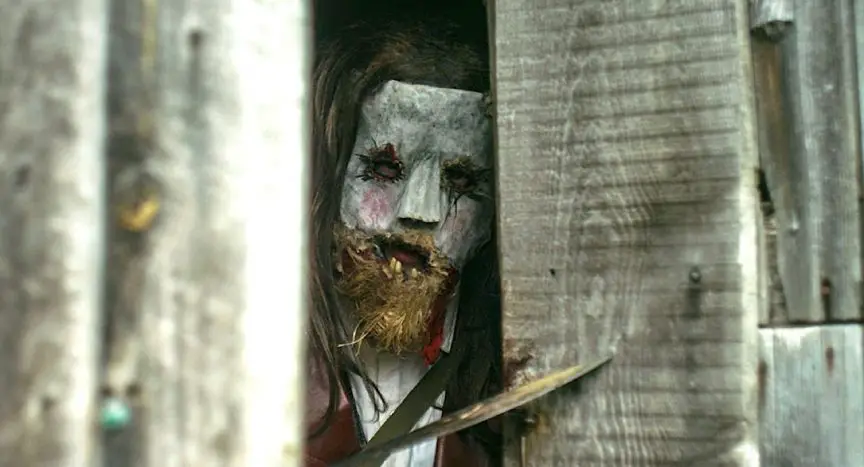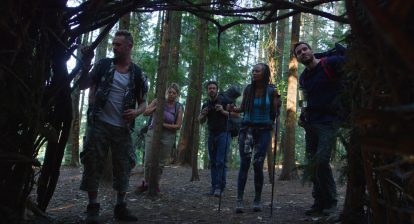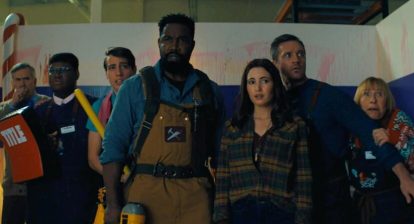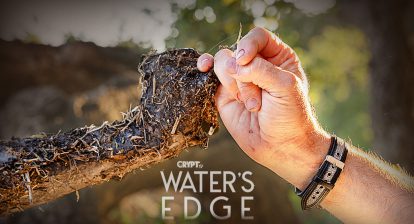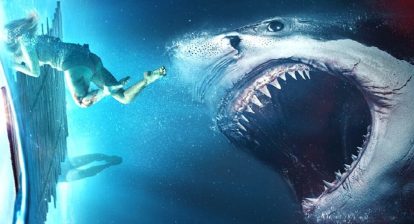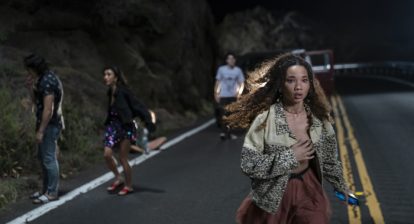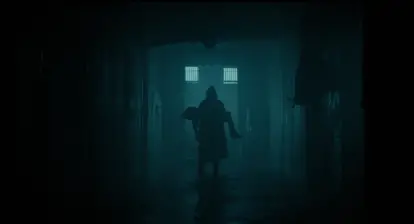What happens when a famous Youtube prankster gets the cameras turned on him and his fiancé, only to realize the stakes are actually life and death? That’s the synopsis of Samuel Goldwyn Films’ Making Monsters, now available on VOD. Directed by Justin Harding and Rob Brunner the film stars Alana Elmer, Tim Loden, Jonathan Craig, Jarrett Siddall and King Chiu. One of the many things that stands out about this film, besides the makeup/special effects, is the sweeping cinematography by Stuart Cameron. After learning that the film was shot on a location that had very limited power, we sat down with Stuart and had him break down some of the most memorable scenes. Read the full interview below.
Wicked Horror: You have worked with Making Monsters director Justin Harding on a lot of other horror projects, including Kookie, which premiered at SXSW in 2017. Because of this already existing relationship, did you get experiment more with Making Monsters?
Stuart Cameron: This project was quite unique in the sense that it went from concept to script to production in a dramatically short period of time. Because of this I didn’t have time to fully prep before we started shooting so there was a process of discovery and continual learning of the style as we went full speed into production. There where budgetary limitations on crew size and equipment, so I was forced to lean heavily on my experience in the factual and doc world to work with what we were given naturally to help leverage it through scheduling and framing rather than using resources to fight against the sun direction etc. There were concessions made by everyone to move in this direction, but it was the only way we were able to achieve the consistency in longer scenes and throughout the storyline of the whole film. The schedule started off as a 10-day shoot, but was lengthened by an additional 6 days for pick-ups once we had most of the major components in the can. So, considering the time of year we shot, daylight hours were a concern and variable weather was always an issue. But going back to the real question, we didn’t experiment more than normal, the film was a constant experiment as each scene unfolded, we learned how we were going to shoot it by the way in which the story was told. The only consistent motif in the film from the camera perspective was the movement – in the beginning of the film the idea was that we were to be well composed on sticks with static frames and as the story unfolded and the characters’ lives began to unravel we started to move the camera more fanatically to add to their feelings of panic and the loss of control. By the end of the film the camera is becomes part of the action, very close to the actors, hand held, moving freely with the action and mostly in very close proximity to all of the action on a wider lens. We moved fast when the action was fast, and the camera drifted subtly when the movement was slow and the actors’ eyes or dialogue took control of the scene.
Wicked Horror: The bathtub scene with Allison is very reminiscent of the famous scene with Heather Langenkamp from A Nightmare on Elm Street. Did you have that film in mind when you were shooting it?
Stuart Cameron: To be honest, no. I mean we are all familiar with that scene, and the number of times it has been replicated in one way or another. Maybe Justin had that scene in mind when he wrote this part of the script, but from my perspective there was no intention to pay homage to it, we were in the location and the intent of the scene was to build tension so the sequence of shots was designed to do that. Again because of time, location, budget and all the other factors we were working with, the creative part becomes how to tell the story within these limitations, what things are we precious about and what things do we have to concede to soldier on for the greater good of completing the project on a whole. I really do like this scene, some of the shots are beautiful and the speed at which we were able to do some of this stuff was incredible based on a few smart decisions at the beginning of the project – placement of our one and only hard light, and the use of actual moonlight on the main floor – these things allowed us to capture some really beautiful stuff within our limited world which is a great success in my mind.
Wicked Horror: Can you talk about that bathroom scene a little more, when Allison sees in image in the tub. That sequence is very quick, but one of the most terrifying/effective in the movie. How many times did you have to shoot that?
The real complications in that scene were the amount of time required for the makeup on our ghost and the much less complicated, but none the less difficult, push in shot of Allison when she sees it for the first time. The shot was difficult because we used a slider in a somewhat unconventional way. The shot starts very low at a similar height to Allison’s point of view in the tub and pushes in all the way up towards her eyes at the door to the bathroom. The camera had to be pushed in and up towards her face through a doorway which made it difficult to maintain a uniform speed and end position. This movement made pulling focus more difficult because of these inconsistencies and we also had to factor in the performance component. Eventually I was able to, push the camera, pull focus and land on my mark a few times in a row, enough that we got a good take with a good camera move and good performance at the same time. It’s definitely not perfect, but like you said, it is one of the most effectively scary parts of the movie.
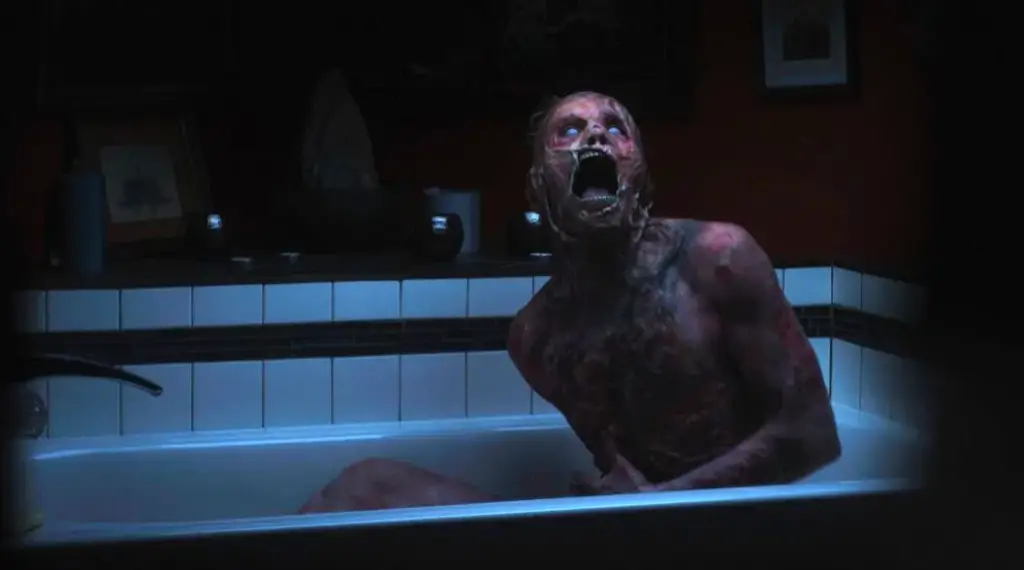
Wicked Horror: Did anything unexpected happen during production that made you pivot your shots, but ended up being beneficial in the long run?
Stuart Cameron: There really wasn’t a scenario where we had been working in one direction and things drastically changed. There were many scenarios where we got to a scene in the film and we came up with a plan to shoot it that may have been drastically different than what we would have planned for prior to the actual day. The film was not storyboarded and we did not really do any scouting or tech-ing because of the speed at which it all came together, so we did scouts and dreamt up the way in which we were going to approach each scene as they happened. But I have talked about this before, the final scene of the film was going to be shot in a much different way than we ended up shooting it. Because of timing we ended up shooting that scene right after the big barn chase scene which ended with David in a full bleeding prosthetic. We obviously couldn’t have that redone, so we continued chronologically through the story. The problem was that at this point we were chasing daylight, so we decided to shoot the scene ‘live’ as a one take, doing all the coverage as the scene unfolded and then cover it with a wide right at the end. On our pick-up day, we went back and shot two inserts to help the edit – one close up pass on Allison’s face and a close up on David’s feet that felt more realistic vs what had been captured on the day. Other than that, the scene lives in the film the way it happened the first time, on the first take.
Wicked Horror: You mentioned in a previous interview that a lot of the security camera footage was captured with a GoPro and then doctored in post. When shots are done that way, are you in post also, helping the create the desired look or is that strictly the editor?
Stuart Cameron: Normally yes, but this project had such limited resources and the Director Justin is so involved in editing and post, I’m pretty sure he was the one who created that look and applied it. Most of the handheld stuff is done with an infrared camera, so it came out of camera looking a particular way, which was perfect the way it was.
Wicked Horror: Angles play a big part in accomplishing a desired look/feel, especially in a horror project like this. Making someone feel small and defeated. How do you decide what angles to shoot the characters, for instance when Allison and Chris are lying in bed and the camera feels like it’s on the ceiling? Or in the field?
Angles were one of the few discussions we had about camera prior to starting production. There are a few shots in the film which are done with the A camera which is up high on the ceiling in the corner of the room on a 14mm lens. One of these shots happens when Allison and Christian are on their initial tour of the church, and another happens in the bedroom. What this was intended to allude to where the security cameras which would become a huge story point later in the film. One of the issues with these shots is that they are impossible to light with the equipment that we had available to us, so as much as we wanted to do more, and play with that idea, I’m not sure we did many more set ups like this. Again, in preproduction we would have all of these types of story conversations, how to convey things visually, or specific visual language that we want to use with certain characters, or particular scenes or moments. But because we didn’t have that chance it was a fluid conversation on the day, how were we going to tell the story, how did the camera have to move to do that. As I mentioned in the beginning of this interview, we used a motif of camera movement throughout the film to help motivate the panic and movement of the characters, but other than that we decided as it happened. A great example of this is when Allison and Christian find the first hidden camera and Christian then goes downstairs looking for David – the A camera circles low around Christian while he yells out. We spin around and around him while he searches for cameras up near the ceiling, this is cut against the ‘security’ cam footage and helps distinguish the two worlds, not only through colour, but angle and movement.
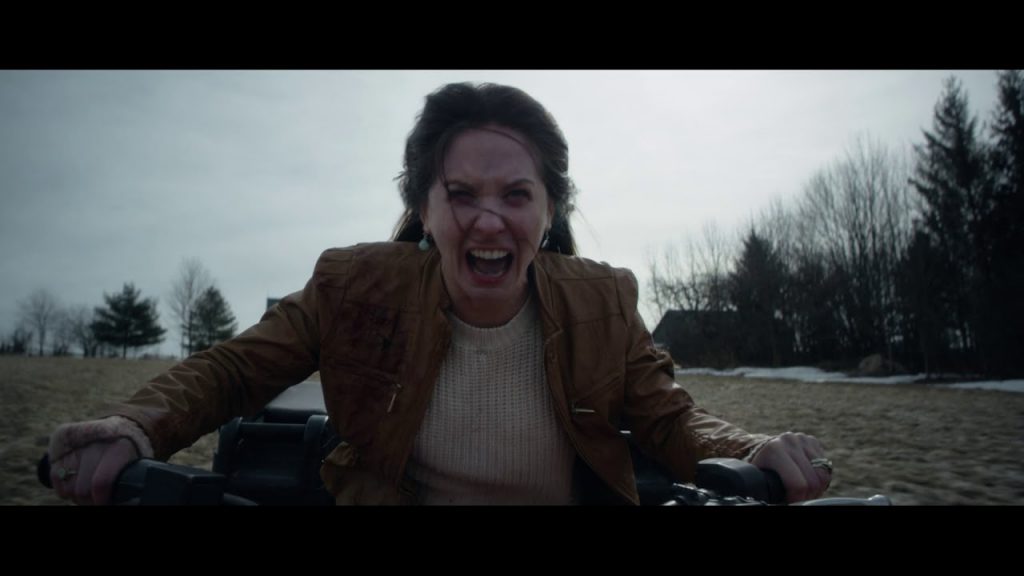
Wicked Horror: Because of budgetary restrictions, was there a particular shot in the film that you had to get creative with shooting?
Stuart Cameron: Every shot in the film was a creative solution to the budget. Every single aspect of every shot was entirely influenced by that one key factor – budget. The weather, the time of day, the action – all these things were uncontrollable for us, so we had to choose what to shoot and when depending on the time of day, the cloud cover etc. it was a fluid schedule which changed constantly to keep up with the changing variables. We shot a lot of day for night stuff to help with the lack of lighting fixtures, and we tried to use as much natural light as possible and where possible.
Wicked Horror: From when you first got in to cinematography, how has the industry changed?
Stuart Cameron: Well, the obvious thing has been the access to equipment. When I started as a trainee in IATSE Local 667 we learned how to load film, and out of the 8 productions I did as a trainee, only one of them was digital, shot on the Sony F-900R which recorded on digital beta tapes. Even since the advent of the 5D and now with the massive boom in LED sources, and most recently single point LED sources – for a fraction of the cost people are able to light and shoot stuff on a 6k camera with beautiful glass that I only dreamed of when I was in their position. The barriers to entry were massive, and most of which was access and cost, so people really had to take a chance on your ability and you had to put in the time to work your way up the ladder.
Wicked Horror: What would be your dream project to work on?
Stuart Cameron: My current trajectory is away from factual programs. I’ve focused all my attention towards building a wealth of work and experience in the commercial industry which I feel will help me hone my skills and prepare me for the eventual realization of my goals to DP episodic or other larger budget feature films. I’m also, for whatever reason, very interested in second unit work. I love the challenges associated with collaborating with other DP’s and learning their style and trying to blend my images seamlessly into their scenes – not only with lighting, but movement, framing, composition and feel. It’s incredibly difficult and very rewarding to learn a new approach and style to my own craft and apply it religiously without forgetting who I am and how I see things.
You can learn more about Stuart Cameron here.
